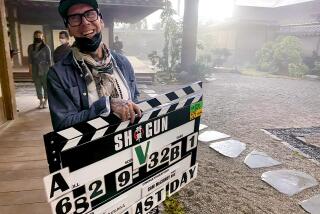How a high-rise martial arts visual feast came to life in ‘Shang-Chi’

How a high-rise martial arts visual feast came to life in ‘Shang-Chi’
- Share via
Of the 1,761 visual effects shots in “Shang-Chi and the Legend of the Ten Rings” from director Destin Daniel Cretton, one scene stands out as particularly challenging, a high-flying combat sequence set hundreds of feet in the air outside a skyscraper in the bright lights of Macau.
Overseen by senior visual effects supervisor Christopher Townsend and visual effects producer Damien Carr, who together, with production design, camera, stunts and special effects, created a perilous moment in the action-packed sequence where our hero Shang-Chi (Simu Liu) attempts to save his close friend Katy (Awkwafina) from plummeting to the ground.
As Katy begins to fall, the camera tracks Shang-Chi in a complex “oner” where he fights off a number of assassins, spinning and leaping through a bamboo scaffolding system before catching her hand. To prep the scene, storyboards and previsualizations outlined the action, and stunt coordinator Brad Allan (who died just weeks before the film’s September release) created a reel of fighting techniques and camera movements called a “stunt vis” to share ideas with Cretton in how the martial arts could all play out.
As the director finessed the scene with stunts and visual effects, production design laid out plans for an enormous three-story scaffolding rig that was connected to a highly reflective wall to create one physical side of the building that stood in for the Golden Daggers Club, an underground fight club in the city.
“We wanted the mirrored wall to see the reflections of the people in the windows rather than having millions of cameras get reflections that way. The art department picked out the exact material we needed, and even though it was an awful amount of cleanup and rotoscoping to pull the characters off the sets, we did get real reflections of our actors,” says Townsend.
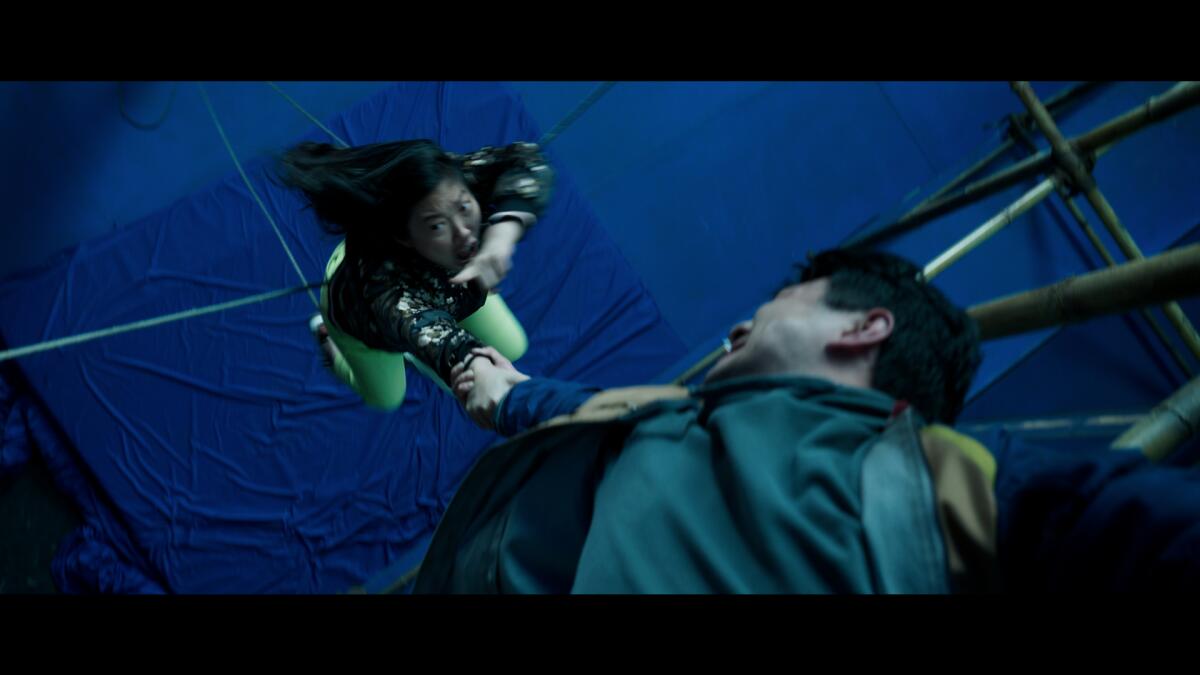

Heading the daily details for the Macau scene was second unit vfx supervisor Joe Farrell, who worked with visual effects vendor Rodeo FX and its team supervised by Ara Khanikian. In creating the computer-generated Macau, Rodeo FX used open street map data with photogrammetry tools to outline the geometry of each building and topography data to create the ground environment. A complete photo-realistic layout of Macau was produced along with over 1,000 pedestrians, 500 vehicles, city lights, glowing billboards and the 56-story high-rise that hosts the Golden Daggers Club.
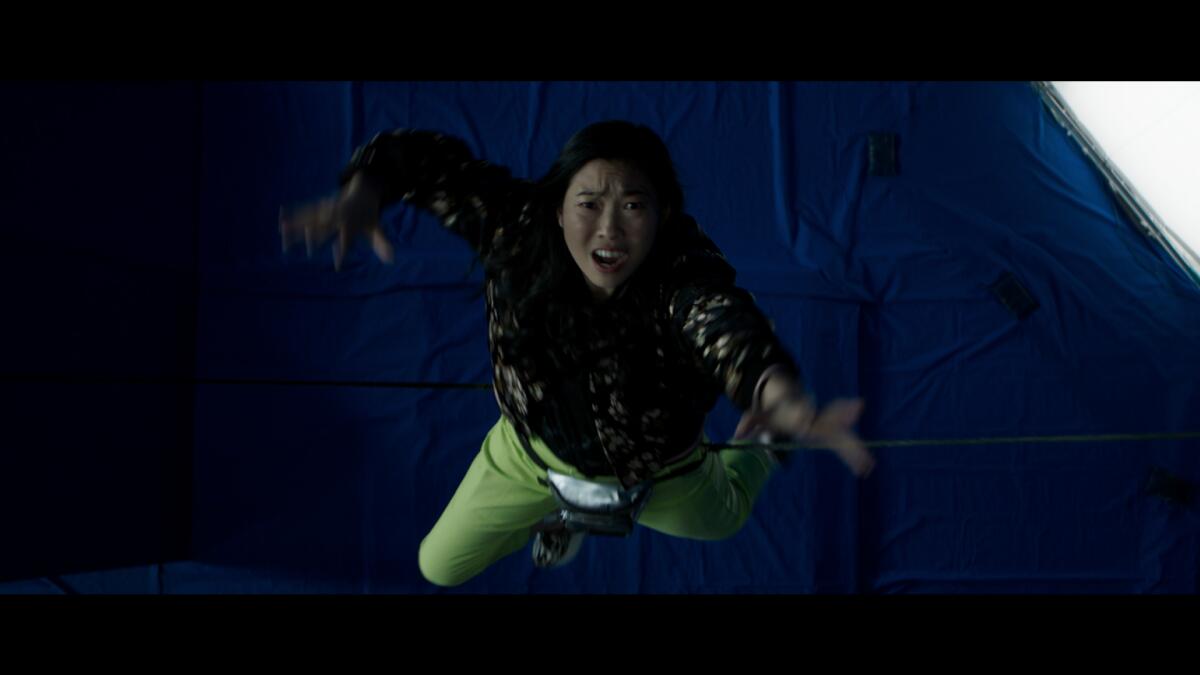
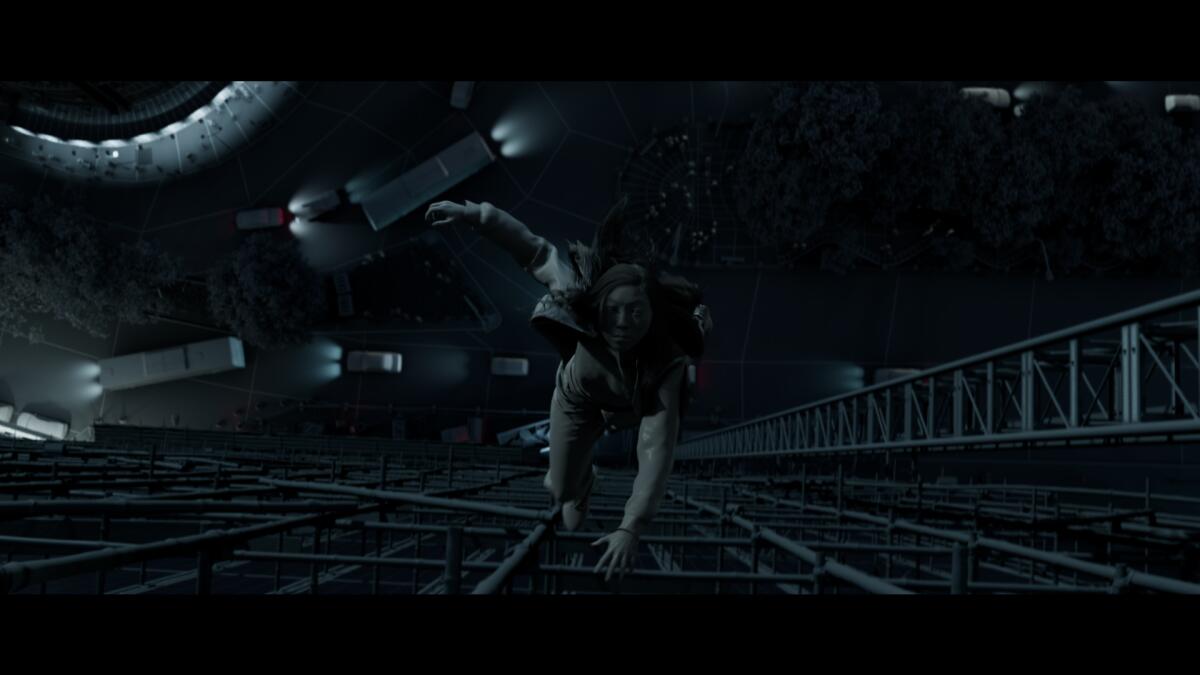
The entire sequence was shot on three different sets built on Fox Studios Australia with the harrowing moment between Shang-Chi and Katy recorded in a near 360-degree blue screen room. Cinematographer Bill Pope filmed the material with ARRI Alexa LF cameras deploying a number of tools including a 45-foot technocrane and steadicam operators while witness cameras tracked the data and helped visual effects match the complex camera movements in post production.
Though Simu Liu performed many of his own stunts, to twist through the bamboo and save Katy, stunt double Jesse Turner stepped in to accomplish the feat. Visual effects then performed a face replacement as needed. When Shang-Chi suddenly gets struck in his chest while holding her hand, it forces him to let go and we see Katy start to plummet.
Though much of the scene was carefully planned, Townsend allows that a lot was discovered on the day, including the closeup of Katy falling and her feeling of vertigo looking down. “Previs should be used as a guide. You don’t have to follow it if you can make it better, but if you can’t, at least do the previs,” he says of the computer previsualization that maps out the sequence digitally before filming. “With this scene, Bill upped the ante and gave us a little more dynamic camera with Katy holding on. Finding that kind of stuff on the day makes it more exciting.”
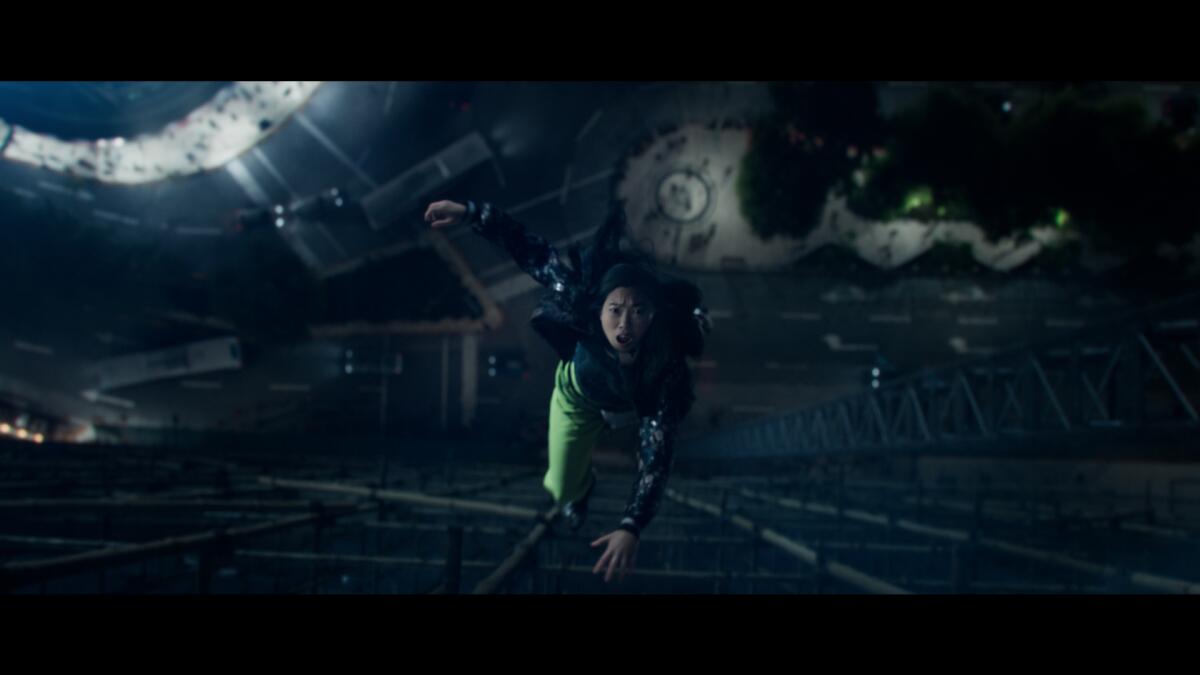
For visual effects, the approach was to keep the camera as grounded as possible. “It’s very much a key character in the storytelling and I think that was important to maintain a visceral experience but also something relatable. Keeping the camera in and among the action is the best way to do that,” says Townsend.
More to Read
From the Oscars to the Emmys.
Get the Envelope newsletter for exclusive awards season coverage, behind-the-scenes stories from the Envelope podcast and columnist Glenn Whipp’s must-read analysis.
You may occasionally receive promotional content from the Los Angeles Times.


